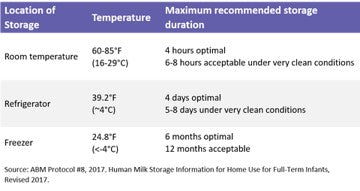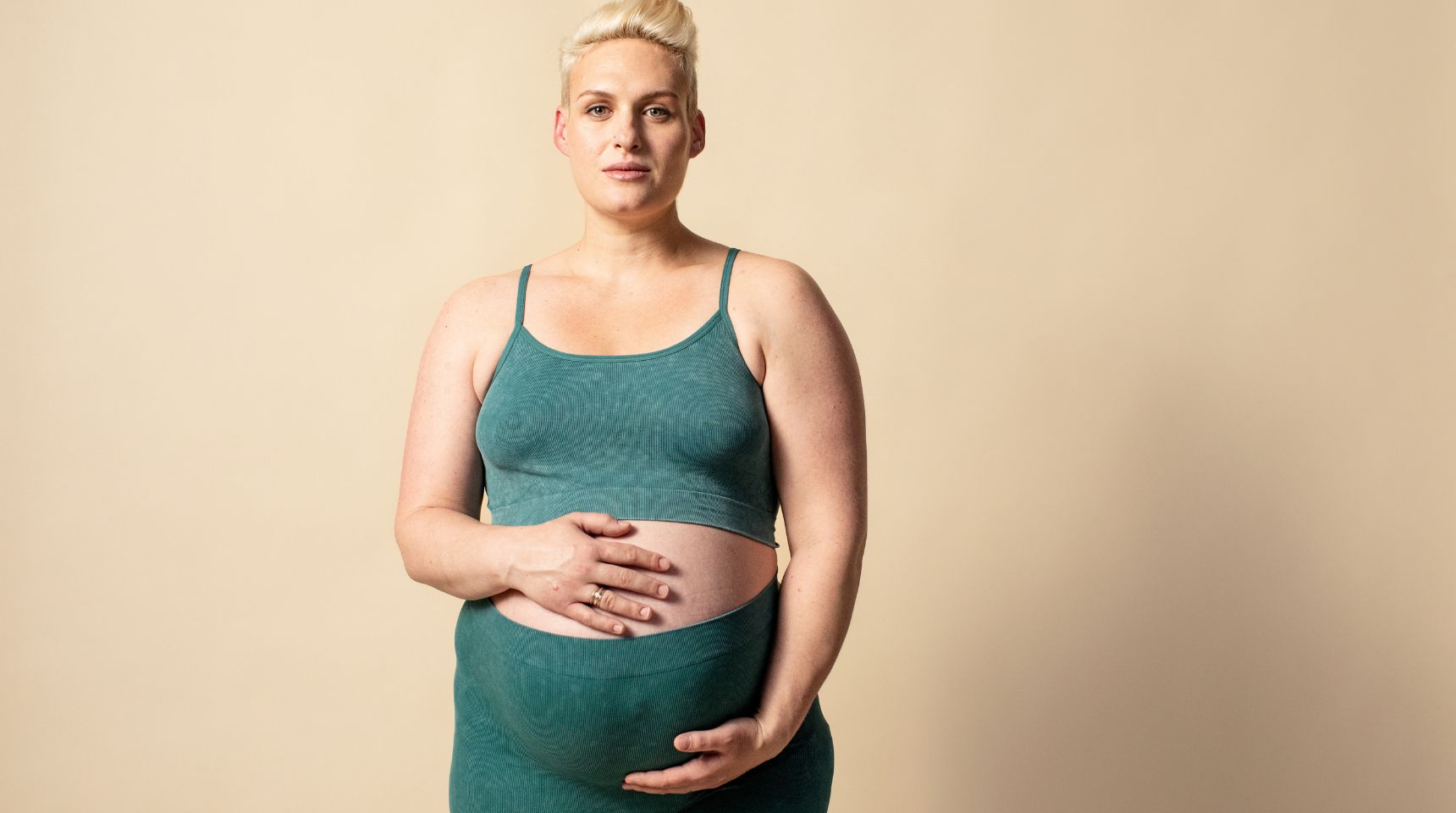You’ve worked hard to pump your breastmilk, so you’ll want to make sure it’s properly stored. Here are some tips for safe breastmilk storage and thawing.
We know that you’ve worked hard to pump breastmilk for your baby, so it’s important to store it properly in a safe and sanitary place. The following are tips for breastmilk storage and thawing to ensure you give your baby the very best.
Safe Temperature Breastmilk Storage Guidelines
Following are guidelines from La Leche League International on how to safely store breastmilk at various temperatures:

(If you're unsure or have questions, please reach out to your healthcare provider.)
What Type of Container to Use
Refrigerated or frozen milk may be stored in:
- Hard-sided plastic or glass containers with well-fitting tops. Make sure you mark them with a date!
- Made without BPA/BPS containers, milk bags that are specifically designed for storing and freezing breastmilk, such as Lansinoh's Breastmilk Storage Bags.
Other storages tips:
- Containers or bags should not be filled to the top - leave at least one inch of space to allow the milk to expand as it freezes.
- Disposable bottle liners are not recommended for safe breastmilk storage because the risk of contamination is greater. These types of bags can be less durable and can tend to leak – you certainly don’t want to inadvertently lose any precious breastmilk!
- Mark the date on the storage container. Also include your baby's name on the label if your baby is in a group day care setting.
- If you are pumping and storing your breastmilk at work in a common refrigerator, make sure you label it with your name or put it in a bag (also marked) so it is not mistaken for regular milk.
- Keep frozen breastmilk in the middle of the freezer where the temperature is most consistent. The temperature on the sides can fluctuate and you do not want milk to partially thaw because it cannot be refrozen.
How to Warm the Breastmilk
- Thaw and/or heat under warm, running water or in a bowl with warm or hot water.
- Do not bring the milk to a boiling point as this will damage some nutrients.
- Gently swirl the milk before testing the temperature. Swirling will also redistribute the cream into the milk. It is normal for stored milk to separate into a cream and milk layer.
- Do not use a microwave oven to heat breastmilk.
How to Store Thawed Breastmilk
- Previously frozen milk that has been thawed can be kept in the refrigerator for up to 24 hours.
- Never re-freeze breastmilk!
Has Your Frozen Breastmilk Gone Bad?
In very rare cases, some mothers - who have meticulously expressed and frozen their breastmilk - have discovered to their dismay that it has an unpleasant smell. This happens when a mother produces milk that is high in lipase, the enzyme that breaks down fat in the milk. Depending upon the level, some mothers notice this rancid smell after their milk has been stored in the refrigerator; others notice it only after the milk has been frozen for awhile and then thawed. Thankfully, this doesn't happen often and can be prevented if the lipase is detected before the milk is frozen.
Treating the milk before freezing is only necessary if your baby refuses to drink the thawed milk. To deactivate the lipase heat expressed breastmilk in pan on the stove just until bubbles start forming around the edges. Remove from the heat and allow to cool. Once it's cool enough to handle safely transfer the milk into a storage container and then freeze and store as usual. For more information, refer to the Breastfeeding Answer Book published by La Leche League International.
Help is available! If you have any questions about proper breastmilk storage tips, talk to your lactation consultant, healthcare provider, or Ask Our Experts.
More Breastmilk Storage Tips
Pump, store, protect and thaw your breastmilk with Lansinoh Breastmilk Storage Bags.
Pump directly into our milk storage bags. No transferring. No waste. Learn more here!
UP NEXT: Tips for storing breastmilk
All content found on the Lansinoh.com website, including: text, images, audio, or other formats were created for informational purposes only. The content is not intended to be a substitute for professional medical advice, diagnosis, or treatment. Always seek the advice of your physician or other qualified health provider with any questions you may have regarding a medical condition. Never disregard professional medical advice or delay in seeking it because of something you have read on this website.









